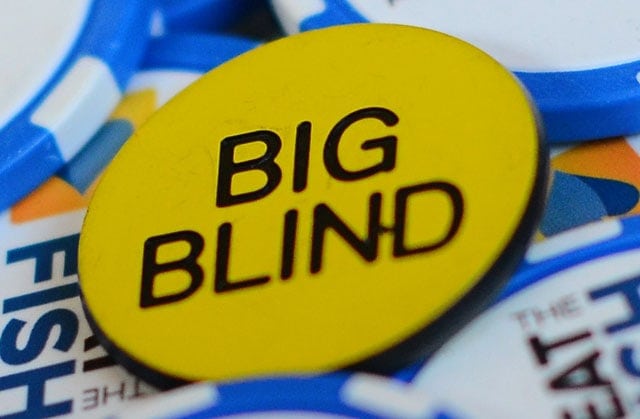Within 6 minutes of the sit & go your starting stack is worth 10 big blinds and if you last a full 12 minutes (an eternity in these games, and maybe elsewhere too) your starting stack will be equivalent to just 5 big blinds. This means the action is always hot and heavy with every single pot making a huge impact to a player’s bottom-line.
- Know Short-Stacked Strategy When you play heads-up, pay close attention to the effective stack, which is the shorter of the two stack sizes. For example, suppose the blinds are $15-$30. Your stack is $2850 and your opponent has $150.
- But heads-up poker comes in different forms, so it’s important to know which fits best with your skill-set. If you have a background playing tournaments or if you just love going all-in, heads-up sit & go tournaments (HUSNGs) are probably the right fit. In this article, we’ll take an in-depth look at the three common forms of HUSNGs.
Heads up sit and gos have risen dramatically in popularity. These games would have been considered a small niche just a few years ago, but are now among the most popular in online poker. Heads up cash players, too, often switch over to the heads up sit and go games when a few bigger games are running.
If you watch the HU SNGs on PokerStars.com, expect to see the biggest names in poker playing $2,000-$5,000 games. Heads up sit n gos are very profitable, but with strong profits almost always comes a lot of competition.
As a result, you will need to put in a lot of effort if you want to truly reap the rewards that heads up sit n gos have to offer. There is a moderately steep learning curve that might seem like it never ends, but eventually you will find that heads up play is quite systematic. The routine nature of heads up sit and gos will likely cost you money in the beginning when you face tough opponents, but it will be your primary source of profit in the end.
Consistency is one of the most vital aspects of any heads up sit and go player’s skill sets. If you can’t play the same way on a regular basis, you will inevitably get eaten up by the flood of sharks that full up these tables. Variance will certainly be a challenge to deal with, especially for players who are unused to it.
The most consistent heads up players, be it in cash games or sit and gos, are almost always the players who win the most money. It is very little coincidence that the top heads up players are all able to remain calm and even keeled no matter what happens in their games. The importance of emotional control and general consistency in your approach to heads up sit and gos should never be undervalued.
One accidental slip up can easily cost you a buy in, which could then lead to two or three buy ins. There is next to no room for error in heads up sit and gos, and there is even less room for error in the mid stakes and high stakes games. If you are prone to tilting and/or losing your concentration, you would be better off looking for a different game.
Small Stakes Heads Up Strategy
The small stakes heads up sit and gos are some of the easiest games in all of poker. Lots of players join these games without any real idea of what they are doing. You will run into the players who are either trying to get better so that they can play higher stakes, or players who are just after a quick fix and are trying to double their money. No matter who you are playing, the same basic approach should be applied.
Don’t try to force anything until the blinds start to diminish your stack. There is plenty of time to go after uncontested pots in the beginning of a SNG. If you are playing in a turbo/ultra turbo SNG, you have no choice but to pick up the pace rather quickly, but you will still have a chance to play a few hands with postflop strategy in mind.
The overall goal in these limits should be to pick apart the other player’s weaknesses. Now, this is your goal in any form of poker, but it is exponentially easier when you only have to beat one player. If you can identify some areas of weakness, it will be somewhat easy to capitalize on them. Go for the kill after you have established an edge.
Heads Up Sit And Go Strategy Pdf


Don’t try to win the whole match within the first few hands (unless you can do it safely). Work on chipping away at your opponent and pushing them to the edge. Because players at these limits are not all that experienced, you will be able to force your opponents into mistakes just as easily as you will be able to outplay them.
Mid Stakes (+) Heads Up Strategy
The mid stakes and high stakes heads up sit and gos are where the games start to really get tough. If you haven’t been able to beat the small stakes games over a significant sample size, don’t even waste your time trying to compete at these limits. The players that you will face in mid stakes games have practiced over thousands and thousands of games, and that is at the very minimum.
As mentioned previously, consistency is the absolute key in these games. Beyond this, you need to be consistent with some very advanced plays. If you can’t pick off light three bets with regularity, the chances are that your opponent will continue making that play. There isn’t a massive edge to be gained once you hit the mid stakes games, so your only chance of winning is to actually be very skilled yourself.
The strategy in these games is not so much taught as it is learned. There are many varying styles that can each work well. Dealing with variance is a necessity because it will smack you on a repeated basis. If you want to beat the mid stakes and high stakes heads up sit and gos, you should have the capability to remain as calm as Phil Ivey, as focused as Patrik Antonius, and as creative as Tom Dwan.
Now you’ve navigated the field, and it’s down to two. You’ve earned a prize of at least three times your buy in (more in a multi table SNG). The rest is all-or-nothing. You will either pick up an extra two buy ins, or nothing. Playing well heads up usually means a little bit of aggression and a little bit of luck. If you take the aggressive approach, you will find your long term heads up results looking pretty good.
Heads up play in the final scene of an SNG is somewhat alien to many players. Players that usually play cash games rarely play heads up, and even the average sit and go player will only get heads up 20% of the time. If you practice these general rules, you can master heads up play, especially against opponents who rarely get there.
Button (Small Blind Play)
When the tournament is down to two, the button player posts the small blind and acts first preflop (last on other streets).

Now that the tournament is heads up, it actually becomes correct to simply call more often preflop, or raise less than all in. Although the blinds are usually high at this point, the average of the two players is also high since everyone else is out of the way.
When on the button, there are two compelling reasons to call the big blind with most starting hands. First is the 3-1 pot odds (slightly higher with antes), and second is the positional advantage of being able to act last after the flop.
Very few hands should be folded from the button. In fact, it is correct to call with any two cards, but if you have been very active, it is sometimes acceptable to fold a very bad starting hand (maybe 9-4 offsuit or worse) to give the impression that you are being selective.
If you have some kind of big hand, it is best to stick in a raise of three times the big blind. Don’t give them a chance to hit bottom pair with a poor starting hand. Also, don’t raise the minimum. You are then giving your opponent 3-1 odds to call.
If you call the big blind, and that player checks preflop, you can be fairly sure they don’t have a good hand. Then, when they check to you on the flop, a minimum bet can often take it down. A thinking big blind player can turn that around on you and check-raise the flop, but the stacks aren’t really deep enough for any kind of fancy plays, so if they pull that, you can be relatively sure they have a good hand like top pair or better.
Big Blind Play
It is right to play more cautiously from the big blind, since you will be out of position for the rest of the hand. If you do have a very good (but not great) starting hand, you usually want to raise (or reraise) all in (if it’s not too much of an overbet) to offset your positional disadvantage postflop.
Heads Up Sng Strategy

If you get a monster starting hand, slow playing it, even before the flop, can be correct. You are trying to induce a bet or two from your opponent, and if you get outflopped, so be it. The flop will miss your opponent far more often than it will give them two pairs or better, so this play can pay off in the long run.

Stack Sizes
Stack sizes are an important consideration. If one player has more than a 3-1 advantage, they should be absolutely ruthless with preflop raises, and most of those raises should be enough to put the short stack all in. The pressure tends to be enormous, and usually the big stack’s advantage goes from 3-1 to something like 5-1 in just a few hands. Now the short stack is forced to call all in with almost anything.
If the stacks are relatively even (neither player has more than a 2-1 advantage), play your normal game until that situation changes, for better or worse, then adjust accordingly.
Your prime objective in Heads Up is to be aggressive and put your opponent under massive pressure but also to play in position and in consideration of stack sizes.